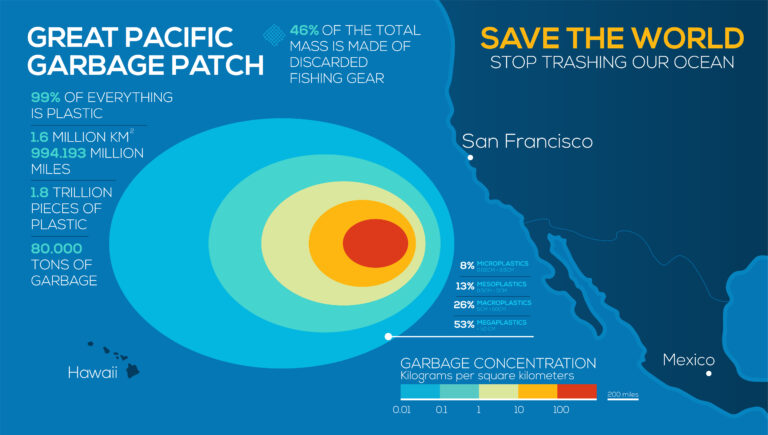
BOOT & FUN Berlin 2024 – We are exhibiting!
Hamburg, 17.11.2024 – After successfully participating in surf festivals in the north of Germany (Fehmarn) and a trade fair in the south,
Surfers have a deep connection to nature and the sea and are concerned about environmental protection. “Sustainable Surfing” plays an important role in this. However, conventional surfing equipment is usually not biodegradable, which is why new, environmentally friendly alternatives are constantly being developed. Find out which ones are included, how you can go on sustainable surfing tours and how we can protect the oceans together with their inhabitants.

Nowadays, we are increasingly concerned with where our products come from, what they are made of and how they were produced. The same goes for our surfing equipment: from gear to clothing to travel – we’ve put together an overview for sustainable surfing for you.
The advantages of surfboards made of polyester resin and polyurethane foam or epoxy resin and EPS are their low weight, durability and ease of repair. Unfortunately, both the production and the material is not sustainable, as it can hardly be recycled. Many shapers are therefore experimenting with alternative materials such as wood, bamboo or cork to produce sustainable surfboards. These are often more expensive, but last a very long time. With a “Wooden Surfboard” you can not only take yourself back to the early days of surfing, but also contribute to environmentally friendly surfing.
Conventional wetsuits are usually not biodegradable. When buying, you can still look for a fair and preferably local production. There are now some neoprene manufacturers that use almost exclusively environmentally friendly raw materials, such as natural rubber, limestone, recycled fishing nets and environmentally friendly adhesives. Not to forget the problem of abrasion of the neoprene, whereby when surfing and sitting on the board, smallest pieces of neoprene are rubbed off the wetsuit and get into the sea. Some manufacturers have now found a remedy for this issue too, by using neoprene that cannot be or can hardly be rubbed off at all. Additionally, these manufacturers pack and ship in an environmentally friendly manner.
Tip: Take good care of your wetsuit to delay buying a new one. The most important thing is to rinse out the salt water after surfing and then not let the wetsuit dry in direct sunlight. Buy a sustainably produced wetsuit if you do eventually need a new one.
When surfing, sufficient sun protection is the be-all and end-all. However, many sunscreens, including those specially formulated for water sports, contain toxic chemicals that harm marine life and your own health. Fortunately, there are already several suppliers of sustainable sunscreens that are biodegradable and also contain no harmful substances. In addition, zinc sunscreen can be used for particularly sensitive skin, especially on the face. The mineral sunscreen lies like a protective film on the skin, which reflects the sun’s rays and thus provides the best protection. So you can jump right into the floods without thinking about a possible sunburn.
Some well-known manufacturers of sustainable sunscreen are Suntribe, Swox, Surfers Skin and Lavera. For special sustainable zinc sunscreen, you’ll find it at Suntribe, Seventy One Percent, Shade as well as Zinka.
Conventional surf wax contains, besides the main ingredient paraffin, which is a by-product of fuel production, many other chemical additives that can be harmful to marine ecosystems. Some companies therefore offer alternative options, many of which are made from beeswax or canola wax. Ideally, there is also no palm oil or soy or synthetic adhesives in the product. Sustainable surf wax is also not only about the ingredients, but also about fair production, short transport routes as well as degradable packaging.
Our three favorites: The “Waxzam” from WAX Z’AM surf wax is made in Munich, also otherwise meets all of the above criteria. The popular “Green-Fix”, on the other hand, is produced on the Atlantic coast in France, which still means a short transport route. When you choose sustainable surf wax from “Rob Machado”, part of the profit is invested in environmental programs.
Our tip: You roughen the old wax with the serrated side of your wax comb to use the old wax for at least one session and thus save surf wax.
When choosing bikinis and swim shorts, there are now also some alternatives to opt for sustainable surf fashion. For example, the surf brand “OY” from Switzerland uses used fishing nets, industrial waste and plastic bottles to produce high-quality and timeless designs. The brand “Surf Girl Gang” focuses specifically on sustainable surf fashion for women, which is ethically and ecologically produced. In general, it makes sense to support local, sustainable manufacturers with fair labor processes and appropriate environmental awareness.
The hunt for the perfect wave often involves travel. Our tips for sustainable surf products are already helping you experience a sustainable surf trip. If you like, you can make an additional positive impact on the environment by choosing a local owner or sustainable surf camp when selecting your accommodations. Here, for example, regional foods are used, electricity is self-generated and rainwater is used to irrigate the gardens. Also, find out locally if there are any eco-friendly projects or activities you can participate in.

Sustainable surfing also means “re-using” used material. Definitely have used surfboards and surfing material a value, as long as there is no severe damage. You will surely find a buyer sooner or later and can still earn money with your old material. This is easy on your wallet and the environment will be happy. Unfortunately, due to the lack of a good trading platform, there is often a lack of patience or time to put used surf equipment online for sale. The Stoked Zone is specially designed to make the buying and selling process as easy as possible. So in our classifieds section you can quickly and easily post your surfing gear for sale, narrow down the search area or customize your location. Potential buyers can use extensive filters to refine their search and receive e-mail notifications of newly listed products. The integrated messenger for direct contact with the seller rounds off the functional scope of our platform.
Feel free to check here in the Stoked Zone under “Ads” to see if you can find any used surf gear that suits you.

When it’s time to get a new surfboard, the old one doesn’t have to end up in the trash. There are interesting alternatives to recycle and creatively reuse your surfing gear. Surfboards can be cut to size and converted into a bookshelf or side table, for example. Old fins can also be ideally attached to a wooden board and then used as a jacket hanger. Give free rein to your creativity for sustainable surfing. And who would say no to a bit of surf and beach atmosphere in the living room, or using used surfboards as a fence?

The vast amount of plastic that ends up in the environment and the associated pollution of it is a well-known and pressing issue. The problem is primarily single-use plastic, as plastic items such as coffee to go cups, straws, bags or packaging are used for a few minutes to hours on average and then disposed of directly. A large proportion of these products end up in the sea without concern – around eight million pieces of plastic are added every day. In the ocean, it is exposed to nature and is broken down by salt water and sunlight into smaller pieces called “microplastics.” As a result, marine animals ingest it into their bodies or become entangled in plastic waste. Microplastics can also settle on coral reefs or the seabed and harm local ecosystems.

The largest accumulation of plastic waste is in the middle of the Pacific Ocean. “The Great Pacific Garbage Patch” is 3-4 times the size of Germany and consists of about 80,000 tons of plastic waste, of which a full 46% comes from fishing gear left behind, such as old nets. In the North Pacific Gyre, trash is trapped in the area due to strong local currents, posing a tremendous threat to diverse marine species. Here too, marine animals get caught in the plastic or mistake it for potential food sources every day. Whale sharks and Basking sharks, for example, filter the water for food, absorbing vast amounts of microplastics from the body. Fortunately, there are already environmental organizations that have set themselves the goal of eliminating the “Great Pacific Garbage Patch”.

Due to the urgency of the problem, many new organizations are being formed in the area of environmental protection, which have declared war on plastic waste.

“It’s only one drinking straw!” – but what if 8 billion people say that in one day? The products we use as consumers in our everyday lives can make a huge difference. Even if huge corporations produce new plastic every day, we as end consumers can decide whether we support these companies. In general, pay attention to where and how much plastic you use in everyday life, as well as while surfing.
True to the motto: Reduce, repair, reuse, recycle – support sustainable surfing! Rather reach for the glass bottle instead of the plastic bottle or use organic wax instead of regular wax – all these small actions make a difference.

Whether you’re watching for waves in a coastal area or walking on the beach, trash lying around can be easily picked up and disposed of – even if it’s not your own trash. This can prevent the plastic from washing back into the sea. After all, clean beaches as well as clean water in natural form are exactly what we want to enjoy! Many hotels in coastal areas also organize beach clean ups and provide guests with the necessary supplies for beach clean up. In some cases, it’s not only worth it for nature, but also for you: Many larger hotel chains in Hawaii, for example, offer special deals in which vacationers find a DIY Beach Clean Up Kit in their rooms. Those who bring back a full trash bag can look forward to a visit to a restaurant or an additional free night, for example.
Let’s tackle it, improve the environment and support sustainable surfing!
Your Stoked Zone Team

Hamburg, 17.11.2024 – After successfully participating in surf festivals in the north of Germany (Fehmarn) and a trade fair in the south,

Hamburg, 10.12.2024 – Boot & Fun Berlin was another success for the development of the Stoked Zone as a platform for surf sports

Hamburg 25.11.2024 We are very pleased to announce our partnership with the premium surfskate brand Curfboard.Curfboard is a German company with a